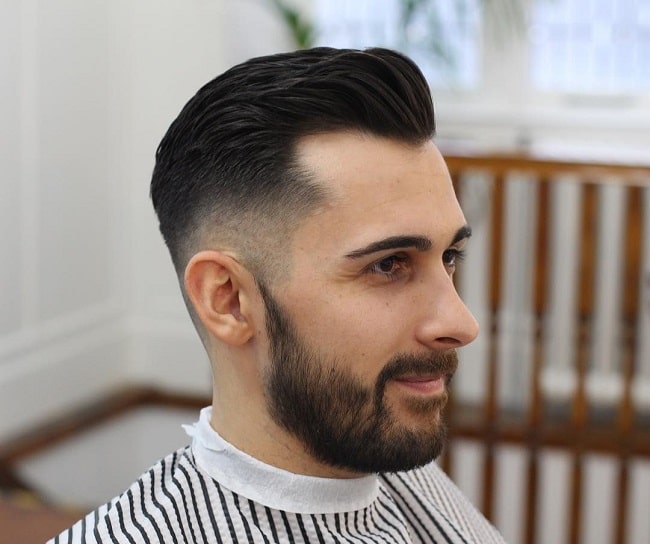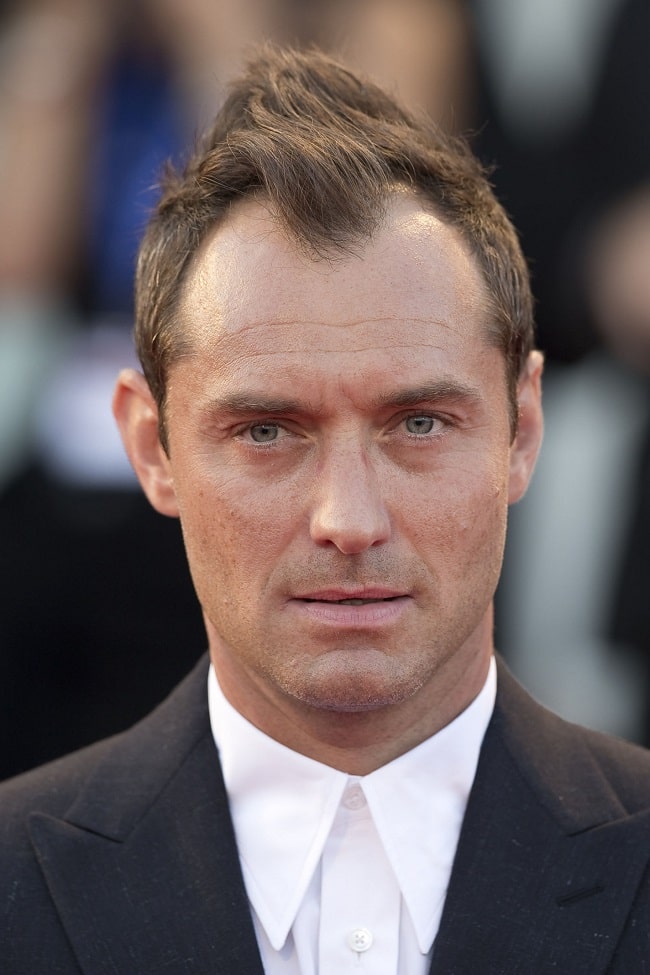1
HOME > Hair >
TOP 5 MOST EFFECTIVE SOLUTIONS FOR MALE PATTERN BALDNESS
FROM BARBER DISGUISING TECHNIQUES TO HAIR PLUG SURGERY
Written by Menswear Style in Hair on the 23rd November 2018

With more than 65% of men over the age of 35 experiencing some level of hair loss, and male pattern baldness accounting for more than 95% of all hair loss cases in men, there are literally billions of men searching for ways to preserve their precious hairlines. By the age of 50, more than 80% of men have hair that has thinned significantly compared to their younger years. With such a high demand for solutions, scientists and companies are constantly working on finding ways to prevent and reverse male pattern baldness. However, despite the fact that there are effective solutions available, many men continue to deal with their hair loss woes simply because they're not aware of how well the options actually work. With that said, here are the five most effective solutions any guy can use to defeat baldness in almost every scenario.
1. Scalp Micropigmentation
Scalp micropigmentation is perhaps the most sure-fire solution for men who have already lost all or most of the hair on the top of their head. Solutions that attempt to regrow or implant follicles have decent success rates, but there's no guarantee that the hair will take root and stay. Scalp micropigmentation services, like those provided by industry leader Skalp, work every time because hair is not being implanted. You can find a more detailed explanation of the treatment via the link above - along with some before and after images - but essentially the scalp is pigmented microscopically to give the appearance of small, shaved hair follicles using natural pigments. This is a worthwhile solution to look into if you have severe hair loss and want to regain that shaved head look you used to have. However, if you still have a decent amount of hair left or you'd prefer a longer hairstyle, consider some of the other options on this list.
If you’re worried about how the process is done and whether or not the treatment will cause you pain or any soreness, the practitioner will first apply a topical numbing cream. However, note that the pain will largely depend on your pain threshold. On the other hand, despite the pre-procedure numbing cream, one may still expect a bit of discomfort during the session.

2. FDA-Approved Hair Loss Drugs
There are only a few approved hair loss treatment drugs, but they've been proven to work in clinical trials, so they deserve to be listed as effective solutions. Minoxidil – the primary ingredient in Regaine and similar products – is one approved drug that comes in the form of an over-the-counter topical scrub that is rubbed into the scalp daily. Finasteride – the active ingredient in Propecia – is another similar drug that has helped men regrow hair and slow down hair loss. There's also an oral medication called dutasteride that has shown some promise in clinical studies. It's important to discuss these options with a doctor and do your own research about possible side effects or drug interactions before you begin applying any hair loss treatments to your scalp on a daily basis.
On the other hand, your doctor could also prescribe oral medication for hair loss. And much like any medication, it would be best to take it regularly for it to see and maintain its benefits. And while it can promise results, it’d be good to note the medication’s possible (but rare) side effects, which could include reduced sex drive. If your wife is pregnant, they should avoid going near crushed tablets of this drug as this could affect their pregnancy.
3. Non-Surgical Hair Replacement
Non-surgical hair replacement is essentially a fancy term for gluing a wig consisting of real human hair to the top of a man's scalp using bio-friendly adhesives. These semi-permanent toupees are certainly more convenient than applying a piece manually every day, and they do look extremely real. In fact, there have been many videos on YouTube showing how convincing these hairpieces are. If you’re looking for a convenient and less invasive way to achieve that luscious hair, then getting a non-surgical hair replacement may be an option worth considering. Its effectiveness and popularity have seen a lot of men getting 'hair systems' in the UK. There’s no pain involved, and you can easily switch things up if you want to explore other hairstyles. Many models and actors have used this solution successfully during its relatively slow advent over the past decade. However, the downside is that it requires ongoing maintenance because eventually, the hairpiece will start to separate from the scalp.

4. Hair Transplantation
Hair transplantation, also commonly called hair plug surgery, is when follicles are taken from one part of the head and implanted on another. The donor hair is usually extracted from 'bald-resistant' areas like the back and sides of the head and upper neck. Donor follicles can be taken in large strips known as grafts to restore large patches of hair on the front and top of the head. Once implanted, a large percentage of the implanted follicles will shed (fall out) within the first three months. However, since those follicle cells have been reactivated, most of them will grow back and the hair continues to grow there naturally for years after. Of course, this is another solution that would require occasional maintenance, as you may have to get new grafts and plugs as your hair continues to recede in untreated areas.
5. Hairline Compensation
Barbers have developed a pretty nifty technique called 'compensation' which is really just a fancy way to say that they're disguising or covering your receding airline with other hair. During the first few years of hair loss, this is the best solution for getting a straight and crisp hairline back, or just finding a style that works for you. This is also one of the easiest solutions in your earlier years because all you have to do is visit a barber that specialises in hairline compensation. Depending on your hairstyle and texture, they can also apply a variety of products to make hair appear thicker in certain areas.

Practicing Good Diet & Hair Care
Finally, one more thing you can do to slow down hair loss and even promote regrowth is fixing your diet, lifestyle, and hair care habits. Consuming a diet high in foods that contain biotin and vitamin A can help promote strong hair growth. Hair and nail supplements are also options that you may want to consider. Likewise, keeping hair hydrated and having a clean scalp will help prevent follicle clogging, which leads to the loss of a significant percentage of follicles in male pattern baldness.
Trending
2
3
4
5
6
7
8
9
10









